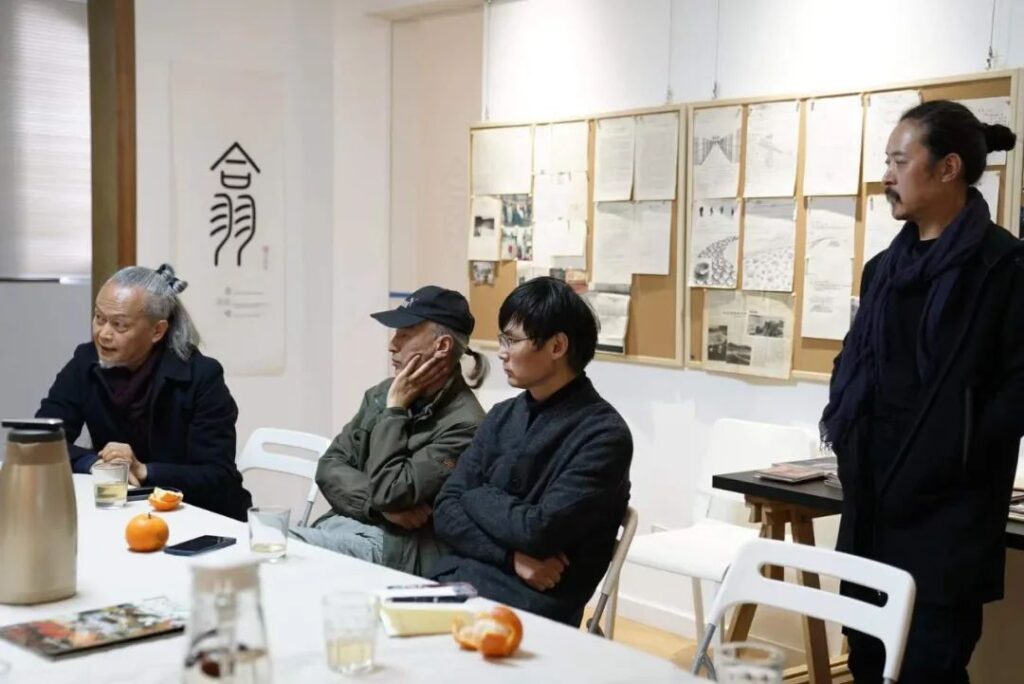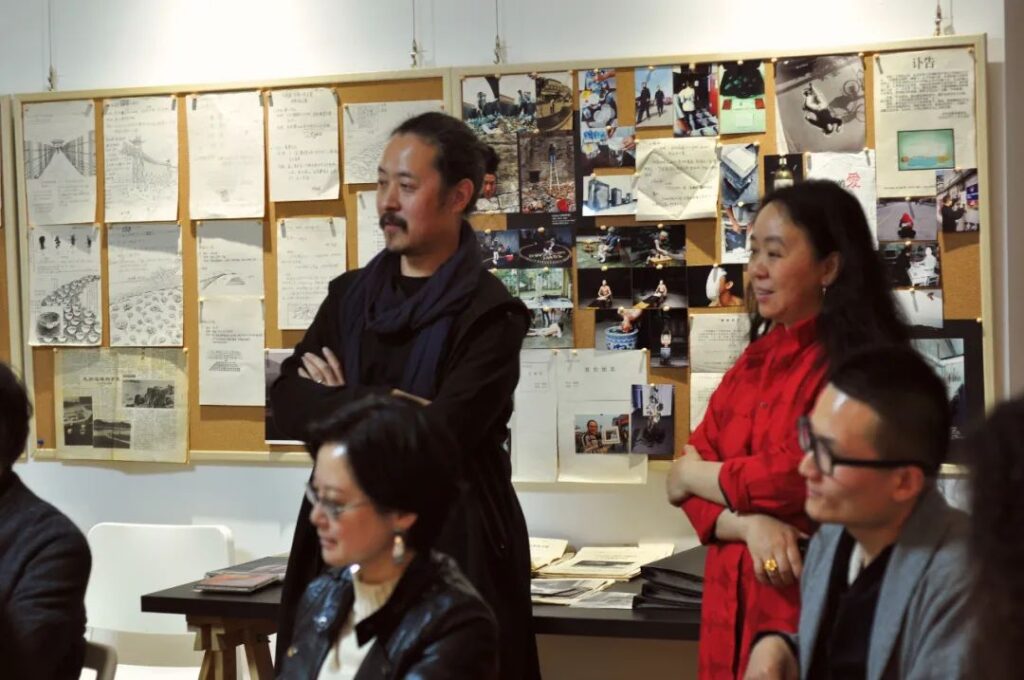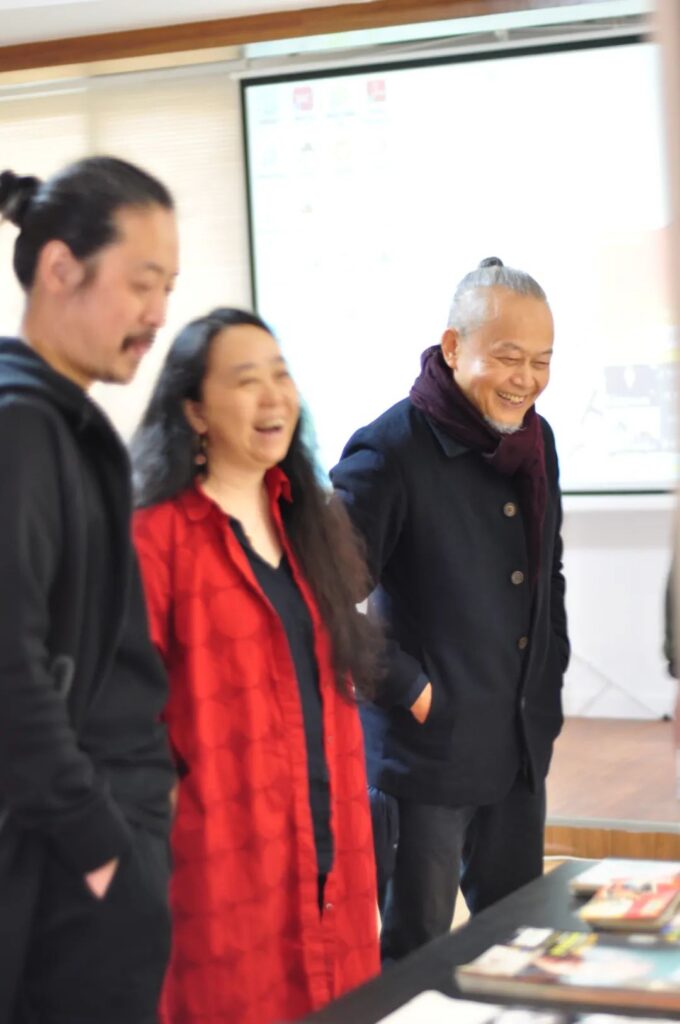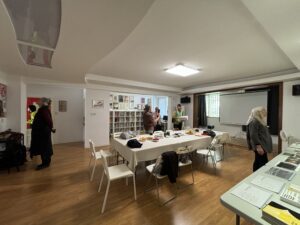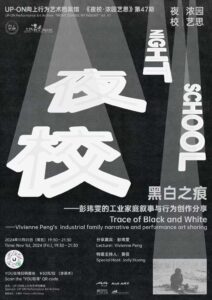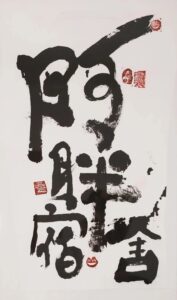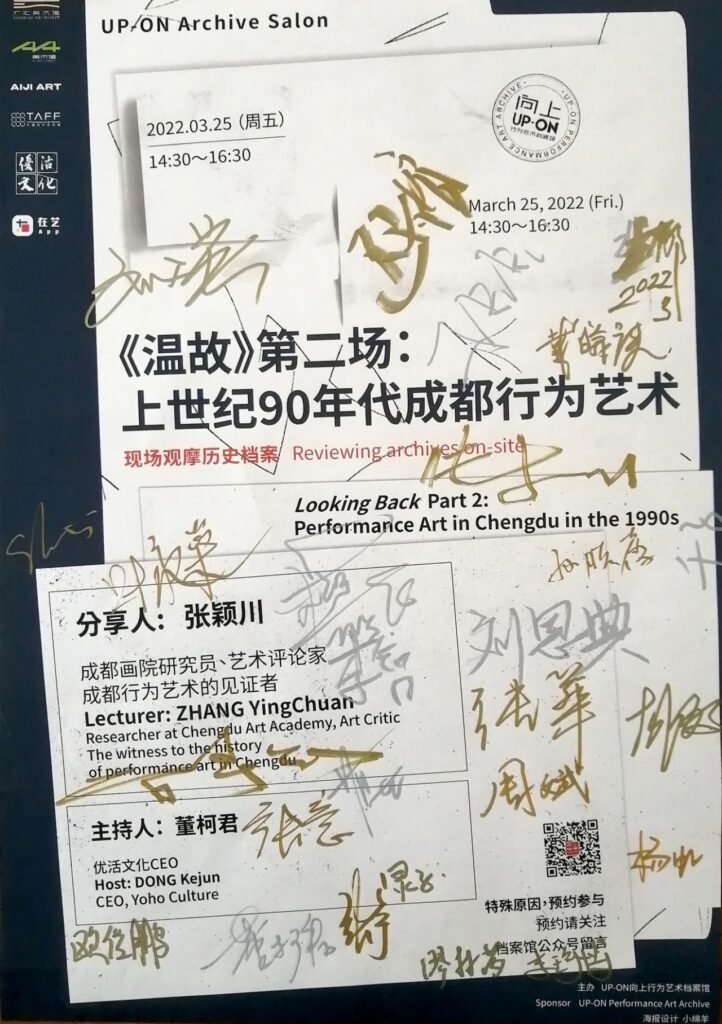
The “Looking back” series is the first thematic activity after the establishment of UP-ON Upward Performance Art Archive, and it will be a long-term project that will continue to be promoted.
Through organizing dialogues and discussions among experts and scholars, “Looking back” reviews the history of performance art in different regions of the world, with the intention of looking back at the history in order to have a more macroscopic conception of the future.
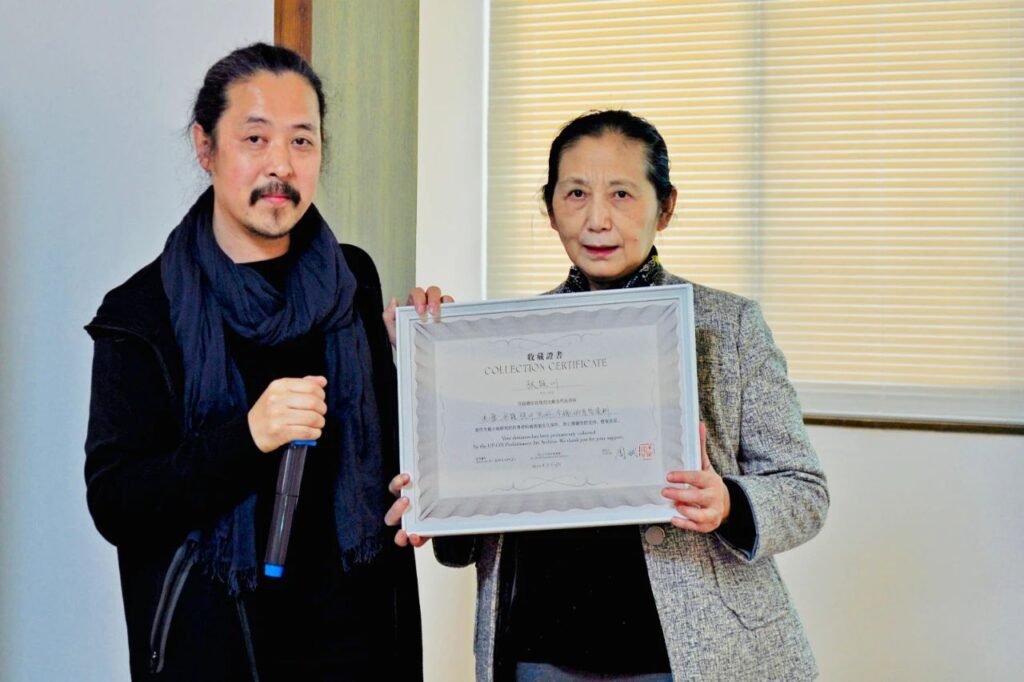
On March 25th, 2022, at 2:30pm, the second session of Warm Up to the Past, “Performance Art in Chengdu in the 1990s”, was held in the Archives as scheduled.
Ms. Zhang Yingchuan, an important witness of Chengdu’s performance art history, was invited as the guest speaker for this session. Taking this opportunity, Ms. Zhang Yingchuan also donated a large amount of precious documents to the Archives. On behalf of the Archives, Zhou Bin presented Ms. Zhang Yingchuan with a certificate of collection as a token of sincere appreciation!

Starting from the actual objects, the sharing reconstructed the art scene of more than twenty years ago through a series of photographs, artist’s manuscripts, and newspaper texts, bit by bit. While listening to Ms. Zhang Yingchuan’s sharing, the audience did not let go of this opportunity to get up close and personal, repeatedly looking at, flipping through, and speculating on the various materials on display.
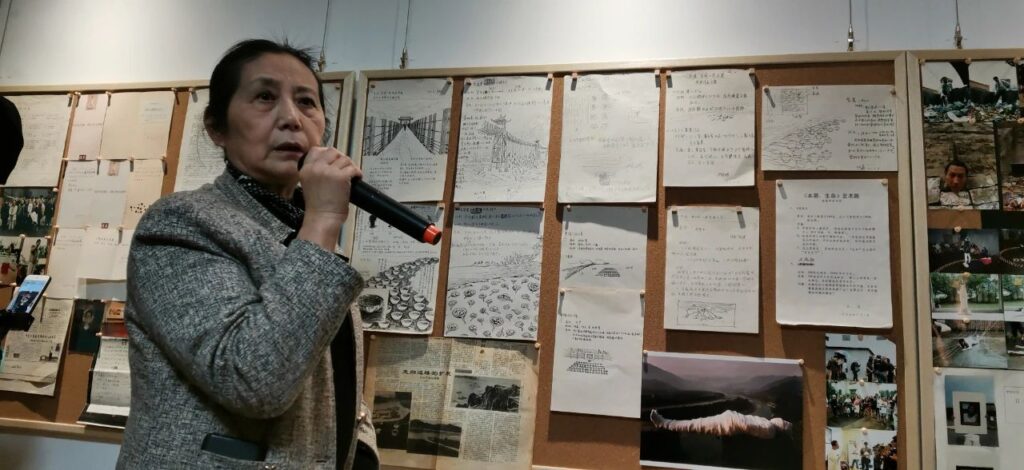
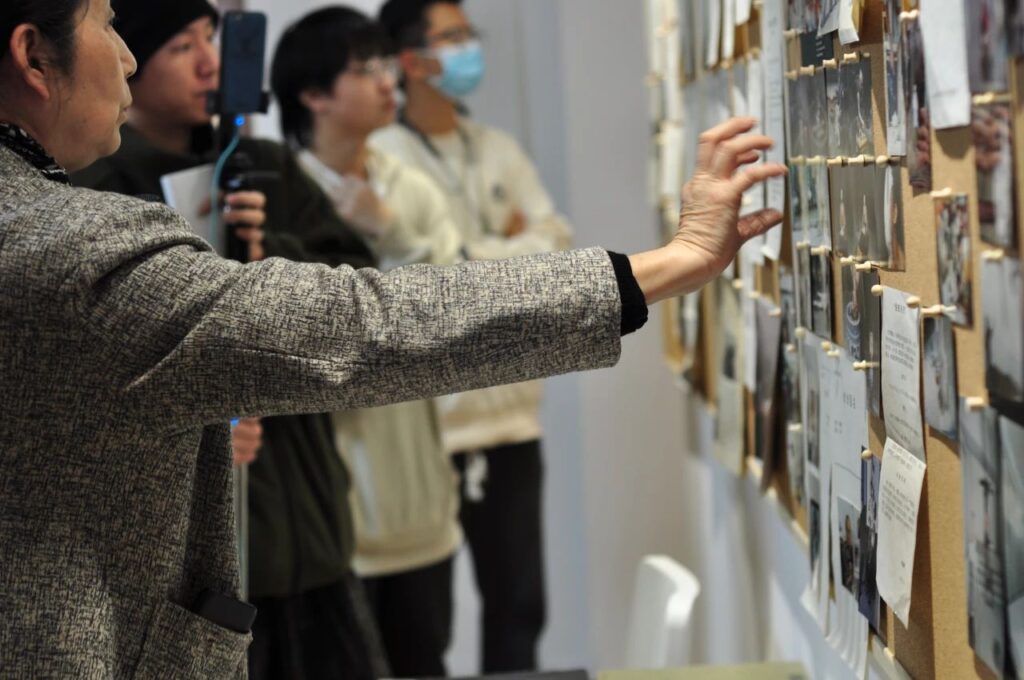

An unexpected surprise: Ms. Chi Ajuan, a veteran media personality, also showed many first-hand video materials at the sharing session, including the performance art scene of Zhou Bin at the White Night Gate in 1999, and the contemporary art exhibition “Peasant Street” curated by Chen Mo, and other precious images, which will become part of the archive’s collection.
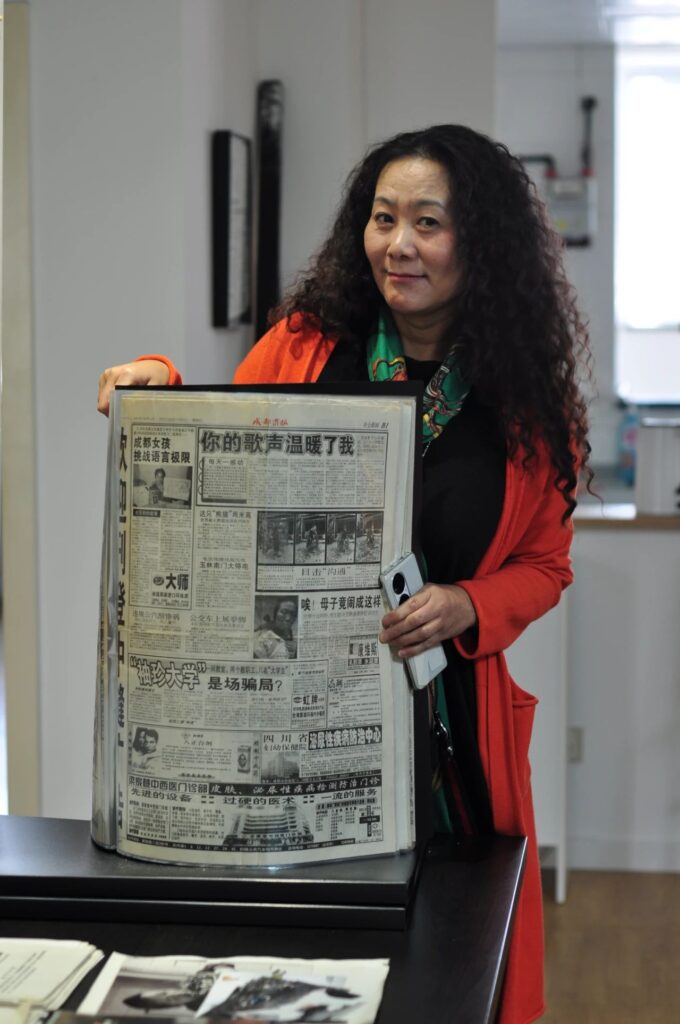

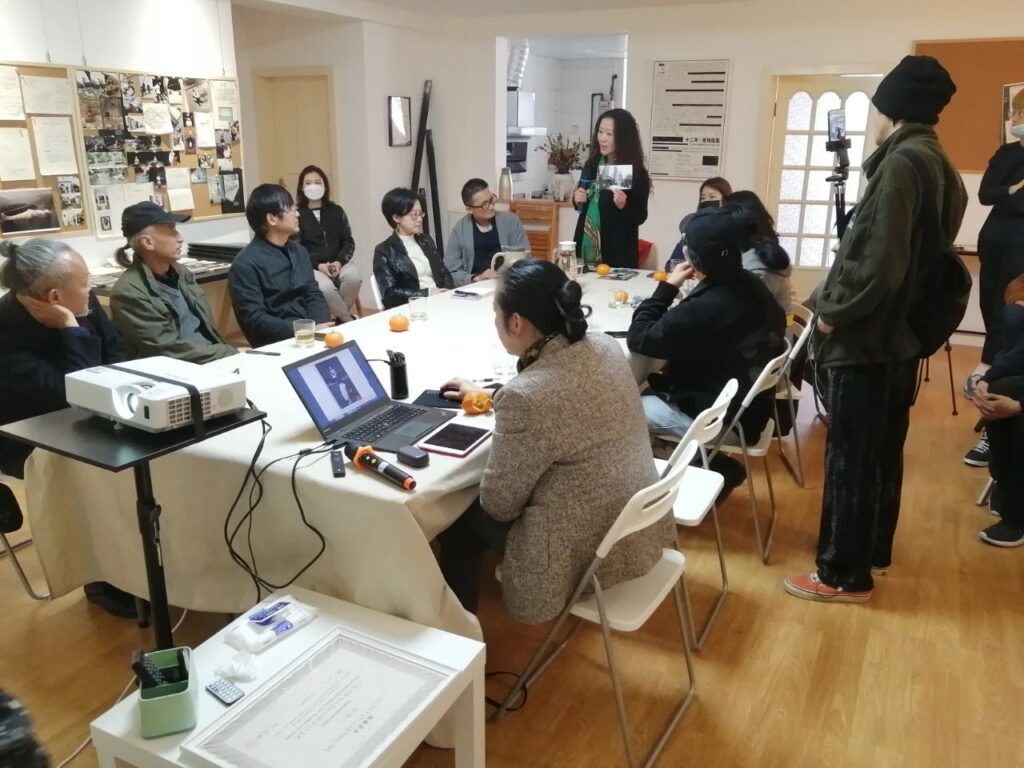

If the first session of this LWF is the physical perception of performance art, the second session is the rethinking of performance art. The guests engaged in a heated discussion on topics related to performance art in the 1990s.
Zhang Yingchuan (Researcher of Chengdu Painting Academy, Art Critic): Regarding the performance art of the 90’s, if we look back at this series of pictures and other related documents today, we will have a clearer understanding of the significance of the experimental art activities of this group of artists in those years, and in fact, their works are not purely performance art, but also include many installations and experimental art in cross-media, which means that the earliest multimedia art in Chengdu was produced in the activities of this group of artists. In other words, the earliest multimedia art in Chengdu was produced in the activities of this group of artists. There is another topic, some people like to use “non-academic” and “street” to discuss Chengdu’s behavioral and multimedia experimental art activities in the 1990s, but these two concepts are a bit narrow here. The so-called “non-academic” and “academic” behavioral art has a precise standard of what kind of specific expression, I have not been able to find the expression of the significance of the academy in this regard, behavioral art has an unprecedented openness and subversive, unnecessary in the The unprecedented openness and subversive nature of performance art makes it unnecessary to discuss it in the context of “academic” and “non-academic” art. In addition, in the late 20th century and 1990s, as Chinese society opened up and reformed itself, many profound structural changes were taking place in the public sphere of public society, and the construction of modern cities was developing rapidly, with all kinds of bars, teahouses, small amusement plazas, and large-scale commercial venues, and the urban media were actively turning to urban news to pay attention to the behavior of the citizens who intervened in the public places.7-19 The art activities of Artists Studio Alliance and Luo Zidan took place in Chengdu’s public spaces during this period, focusing on the major events of the city’s public society and the daily lives of its citizens, and actively participating in public spaces to speak out and engage in dialog with the public. The term “street art” appeared in China at the beginning of the 20th century during the Republic of China period, and after more than half a century of development in the late 20th century and the 1990s, it has become an inappropriate past tense term for what this group of artists in Chengdu has done with a tendency toward public culture and art. The famous German philosopher Habermas wrote his book “The Structural Transformation of the Public Sphere” in the 1960s, which has positively enlightened the value of learning on how to recognize the development of our domestic public society and the creative activities of artists in public places.
Dai Guangyu (artist): The development of performance art in Chengdu was inseparable from the relatively free discussion environment in Chengdu at that time. At that time, Chengdu’s media attention to performance art was unparalleled in the whole country. At that time, even Beijing’s positive coverage of performance art was based on Chengdu’s performance artists.
Zhang Yi (Professor, Sichuan University): The flourishing of Chengdu’s paper media in the 1990s was in fact a continuation of the civic space that had existed since the modern era, a system that was revitalized after the reform and opening up of China. This coincides with the situation in Chengdu where performance art was able to enter public space and be discussed. The place as a meaningful space, where multiple forces form interactions, games, and discussions. Mr. Zhang Yinchuan mentioned Habermas’s theory of interaction, which in fact provides a very important theoretical support for the intervention of performance art in civil society.
Zhao Liuqianzi (Student, Wenxin College, Sichuan University): After listening to today’s sharing, I have a feeling that performance art at that time seemed to have a strong practical orientation, but today’s performance art seems to be more internal and more about the individual. Does this phenomenon signify a shift?
Dai Guangyu: Yes, performance art in the 1990s was very social.
Zhang Hua (artist): The 90s was actually a very idealized and open environment.
Dai Guangyu: But this kind of individualized expression today is equally valuable.
Zhang Yingchuan: The language style and various forms of expression of art in different historical periods can be different. It is normal for today’s young people to feel that the art of decades ago is different from that of today.
